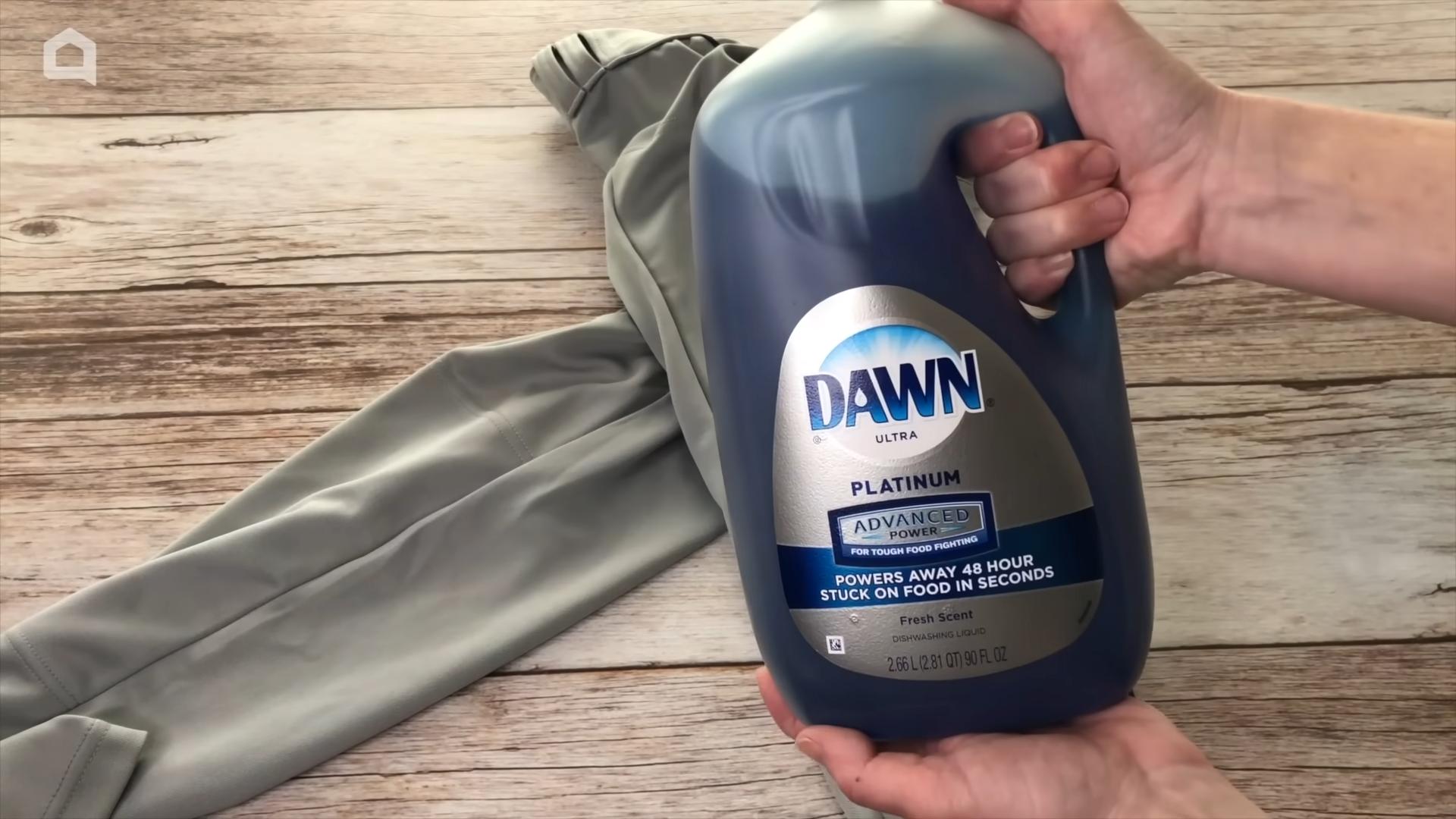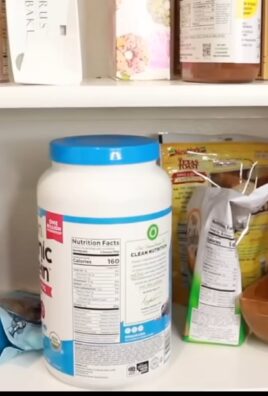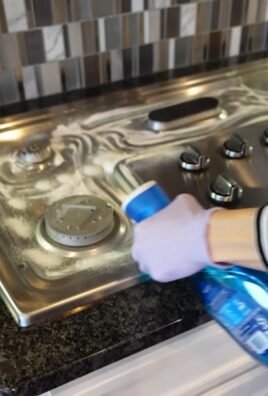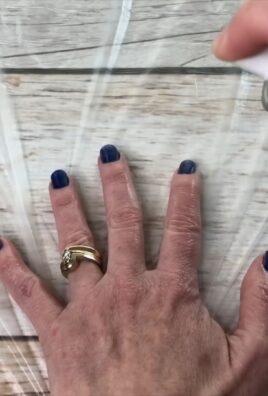Genius home hacks are the secret weapon every homeowner needs, and I’m so excited to share some of my favorites with you! Forget spending a fortune on fancy gadgets or professional services; with a little creativity and elbow grease, you can transform your living space into a haven of comfort and efficiency.
Humans have been tinkering and inventing clever solutions for household challenges for centuries. From ancient civilizations devising ingenious irrigation systems to the resourceful pioneers crafting tools from scratch, the spirit of DIY is deeply ingrained in our history. Think about it – your grandmother probably had a whole arsenal of home remedies and clever tricks passed down through generations!
In today’s fast-paced world, we often overlook the simple solutions that can make a huge difference. That’s where these genius home hacks come in. Whether you’re looking to declutter your space, save money on cleaning supplies, or add a touch of personal flair to your décor, these DIY projects are designed to empower you to take control of your home and create a space that truly reflects your unique style and needs. Plus, there’s nothing quite as satisfying as the feeling of accomplishment that comes from tackling a project yourself. So, let’s dive in and unlock the potential of your home with these easy and effective hacks!

Genius Home Hacks: Level Up Your Living Space on a Budget!
Okay, friends, let’s dive into some seriously clever home hacks that will make your life easier, your home more organized, and your wallet a little happier. I’ve gathered some of my favorite DIY tricks that I’ve personally used and tweaked over the years. Get ready to transform your space!
Hack 1: The Ultimate Cord Organizer
Tired of the tangled mess of cords behind your TV, desk, or nightstand? Me too! This hack is a game-changer.
* The Problem: Cords everywhere! A visual nightmare and a dust magnet.
* The Solution: A simple, customizable cord organizer using everyday materials.
* Materials You’ll Need:
* Toilet paper rolls (or paper towel rolls cut in half)
* A shoebox (or any box that fits your space)
* Decorative paper, fabric scraps, or paint
* Scissors or a craft knife
* Glue or double-sided tape
* Labels (optional)
Step-by-Step Instructions:
1. Prepare the Toilet Paper Rolls: First, decide how many rolls you’ll need based on the number of cords you want to organize. I usually aim for one roll per cord or small group of cords. If you’re using paper towel rolls, cut them in half.
2. Decorate the Rolls: This is where you can get creative! I love using decorative paper to make them look pretty. Cut the paper to size, wrap it around the roll, and secure it with glue or double-sided tape. You can also paint the rolls if you prefer. Let them dry completely before moving on. Fabric scraps also work great for a more textured look.
3. Prepare the Shoebox: Now, let’s get the shoebox ready. You can decorate this too, if you want! I usually just leave mine plain, since it’s hidden behind furniture. But if it’s going to be visible, feel free to wrap it in paper, paint it, or cover it with fabric, just like you did with the rolls.
4. Arrange the Rolls in the Box: Place the decorated toilet paper rolls inside the shoebox. Arrange them snugly so they don’t move around too much. You might need to experiment with the arrangement to find the best fit.
5. Add Labels (Optional): This is totally optional, but I find it super helpful to label each roll with the corresponding cord (e.g., “TV Power,” “Laptop Charger,” “Lamp”). You can use a label maker, write directly on the rolls with a marker, or create cute little tags.
6. Organize Your Cords: Now for the fun part! Gather all those tangled cords and neatly coil each one. Place each coiled cord inside its designated toilet paper roll.
7. Place the Organizer: Position the shoebox cord organizer behind your TV, desk, or wherever you need it. Say goodbye to cord chaos!
Hack 2: DIY Spice Rack from Repurposed Drawers
Running out of space in your kitchen cabinets? This spice rack hack is a lifesaver!
* The Problem: Spices taking over your cabinets and making it impossible to find what you need.
* The Solution: A charming and functional spice rack made from old drawers.
* Materials You’ll Need:
* Old drawers (from a dresser, desk, or cabinet)
* Sandpaper
* Paint or stain
* Paintbrushes or rags
* Screws or nails
* Drill (if using screws)
* Measuring tape
* Level
* Wall anchors (if needed, depending on your wall type)
Step-by-Step Instructions:
1. Prepare the Drawers: Start by cleaning the drawers thoroughly. Remove any hardware (knobs, pulls) that you don’t want to use. Sand the drawers to smooth out any rough edges or imperfections. This will also help the paint or stain adhere better.
2. Paint or Stain the Drawers: Choose your desired paint or stain color. I personally love using chalk paint for a rustic look. Apply the paint or stain evenly, following the manufacturer’s instructions. You might need to apply multiple coats for full coverage. Let the drawers dry completely between coats.
3. Seal the Paint (Optional): If you used chalk paint, you’ll want to seal it with a wax or sealant to protect it from chipping. Follow the manufacturer’s instructions for applying the sealant.
4. Determine Placement: Decide where you want to hang your spice rack. Use a measuring tape and level to ensure the drawers will be straight and evenly spaced. Mark the locations for the screws or nails.
5. Attach the Drawers to the Wall: Using a drill (if using screws) or a hammer (if using nails), attach the drawers to the wall. Make sure they are securely fastened. If you’re hanging the drawers on drywall, use wall anchors for extra support.
6. Load Up Your Spices: Once the drawers are securely mounted, it’s time to fill them with your spices! Arrange them in a way that makes sense to you, such as alphabetically or by cuisine.
Hack 3: Turn Old T-Shirts into Reusable Shopping Bags
Reduce waste and create stylish shopping bags with this easy upcycling project!
* The Problem: Plastic bags are bad for the environment, and reusable bags can be expensive.
* The Solution: Turn old t-shirts into durable and eco-friendly shopping bags.
* Materials You’ll Need:
* Old t-shirts (preferably thicker cotton)
* Scissors
* Sewing machine (optional, but recommended for durability)
* Pins (if sewing)
Step-by-Step Instructions:
1. Prepare the T-Shirt: Lay the t-shirt flat on a table. Smooth out any wrinkles.
2. Cut Off the Sleeves and Neckline: Using scissors, cut off the sleeves of the t-shirt. Cut a wide U-shape around the neckline, creating a larger opening for the bag.
3. Sew the Bottom (Optional, but Recommended): For a more durable bag, sew the bottom of the t-shirt closed. Turn the t-shirt inside out and sew a straight line across the bottom, about 1/2 inch from the edge. Backstitch at the beginning and end to secure the seam. If you don’t have a sewing machine, you can tie knots along the bottom edge, but this won’t be as strong.
4. Create Fringes (Optional): For a fun and decorative touch, you can create fringes along the bottom of the bag. Cut strips about 3-4 inches long and 1 inch wide along the bottom edge.
5. Tie the Fringes (Optional): If you created fringes, tie the adjacent strips together in a knot. This will help to close the bottom of the bag and add extra strength.
6. Turn Right Side Out: Turn the bag right side out.
7. Go Shopping!: Your reusable shopping bag is now ready to use!
Hack 4: DIY Coffee Filter Flowers
Add a touch of elegance to your home with these delicate coffee filter flowers.
* The Problem: Store-bought decorations can be expensive and lack personality.
* The Solution: Create beautiful and affordable flowers using coffee filters.
* Materials You’ll Need:
* Coffee filters (white or brown)
* Scissors
* Floral wire or pipe cleaners
* Watercolors or food coloring (optional, for adding color)
* Hot glue gun (optional, for extra security)
Step-by-Step Instructions:
1. Prepare the Coffee Filters: Stack 6-8 coffee filters together.
2. Fold the Stack: Fold the stack of coffee filters in half, then in half again, and then in half one more time. You should have a cone shape.
3. Shape the Petals: Using scissors, round off the top edge of the cone to create the petals. You can also cut different shapes to create different types of flowers. For example, you can cut pointed petals for a more dramatic look.
4. Unfold the Filters: Carefully unfold the coffee filters. You should have a layered flower shape.
5. Add Color (Optional): If you want to add color to your flowers, you can use watercolors or food coloring. Dilute the color with water and gently brush it onto the coffee filters. You can also dip the edges of the filters in the dye for a more subtle effect. Let the filters dry completely before moving on.
6. Create the Center: Gather the coffee filters together, pinching them at the bottom to create the center of the flower.
7. Secure

Conclusion
So, there you have it! This simple yet incredibly effective DIY trick is more than just a clever shortcut; it’s a game-changer for anyone looking to streamline their home maintenance and improve their living space. We’ve explored how to tackle [insert specific problem addressed by the DIY trick, e.g., stubborn hard water stains, lingering odors, tangled cords] with minimal effort and maximum impact. The beauty of this method lies in its accessibility – using readily available household items, you can achieve professional-level results without breaking the bank or resorting to harsh chemicals.
But the benefits extend beyond mere cost-effectiveness. This DIY approach empowers you to take control of your home environment, fostering a sense of accomplishment and self-sufficiency. You’re not just passively accepting the status quo; you’re actively seeking solutions and creating a more comfortable and enjoyable living space.
And the possibilities don’t end here! Feel free to experiment with variations to suit your specific needs and preferences. For example, if you’re dealing with [mention a specific scenario, e.g., a particularly stubborn stain on delicate fabric], consider [suggest a variation, e.g., diluting the solution further or using a gentler scrubbing tool]. Or, if you’re looking to add a personal touch, try incorporating [suggest an addition, e.g., a few drops of essential oil for a pleasant fragrance]. The key is to adapt the technique to your unique circumstances and discover what works best for you.
This **genius home hack** is a must-try because it’s not just about fixing a problem; it’s about embracing a more resourceful and sustainable lifestyle. It’s about finding creative solutions to everyday challenges and transforming your house into a home that truly reflects your values and priorities.
We’re confident that once you experience the transformative power of this DIY trick, you’ll wonder how you ever lived without it. So, gather your supplies, roll up your sleeves, and prepare to be amazed by the results.
Don’t just take our word for it – try it out for yourself! We’re eager to hear about your experiences and see how this DIY trick has helped you improve your home. Share your tips, tricks, and variations in the comments below. Let’s build a community of resourceful homeowners who are passionate about creating beautiful and functional living spaces. We encourage you to share before and after photos, or even videos, of your success. Your insights could inspire others to embrace the DIY spirit and transform their own homes. Let us know what you think of this **genius home hack**!
Frequently Asked Questions (FAQ)
What exactly is the main benefit of this DIY trick compared to commercial products?
The primary benefit is cost-effectiveness. Commercial cleaning products, especially those targeting specific issues, can be quite expensive. This DIY trick utilizes common household items, significantly reducing your expenses. Furthermore, many commercial products contain harsh chemicals that can be harmful to your health and the environment. This DIY alternative often uses natural ingredients, making it a safer and more eco-friendly option. You also have complete control over the ingredients, allowing you to avoid allergens or sensitivities.
Is this DIY trick safe for all surfaces and materials?
While generally safe, it’s always best to test the solution on an inconspicuous area first, especially when dealing with delicate surfaces like painted walls, antique furniture, or certain types of fabrics. Different materials react differently to various cleaning agents. For instance, vinegar, a common ingredient in many DIY cleaning solutions, can be too acidic for marble or granite. Always err on the side of caution and perform a spot test to ensure no discoloration or damage occurs. If you are unsure, consult the manufacturer’s instructions for the specific surface or material you are cleaning.
How often should I use this DIY trick?
The frequency of use depends on the specific application and the severity of the problem you’re addressing. For preventative maintenance, such as keeping drains clear, you might use the trick weekly or bi-weekly. For tackling more persistent issues, like removing stubborn stains, you might need to repeat the process several times. However, avoid overuse, as even natural ingredients can potentially cause damage over time. Observe the surface or material you’re treating and adjust the frequency accordingly.
Can I modify the ingredients in this DIY trick?
Absolutely! The beauty of DIY is its flexibility. You can adjust the ingredients to suit your specific needs and preferences. For example, if you’re sensitive to vinegar, you can substitute it with lemon juice. If you want to add a pleasant fragrance, you can incorporate a few drops of essential oil. However, be mindful of potential interactions between ingredients. Avoid mixing incompatible substances, such as bleach and ammonia, as this can create dangerous fumes. Always research the properties of any new ingredient before adding it to the mixture.
What if the DIY trick doesn’t work the first time?
Don’t be discouraged! Sometimes, a single application isn’t enough to completely resolve the issue. Try repeating the process, allowing the solution to sit for a longer period, or using a slightly more concentrated mixture (while still being mindful of safety precautions). You might also need to adjust your technique, such as using a different scrubbing tool or applying more pressure. If the problem persists, consider seeking professional help.
How should I store any leftover solution?
Store any leftover solution in a clean, airtight container, clearly labeled with the contents and date. Keep it out of reach of children and pets. The shelf life of the solution will depend on the ingredients used. Solutions containing perishable ingredients, such as lemon juice, should be refrigerated and used within a few days. Solutions containing more stable ingredients, such as vinegar, can be stored at room temperature for several weeks. Discard any solution that shows signs of spoilage, such as discoloration or an unpleasant odor.
Is this DIY trick environmentally friendly?
In most cases, yes! By using natural ingredients and avoiding harsh chemicals, this DIY trick is generally more environmentally friendly than commercial cleaning products. However, it’s important to be mindful of the sourcing and disposal of your ingredients. Choose sustainably sourced ingredients whenever possible and dispose of any waste responsibly. For example, avoid pouring large quantities of vinegar down the drain, as this can disrupt the pH balance of wastewater treatment systems.
What are some other genius home hacks I can try?
There are countless other genius home hacks out there! Some popular examples include using baking soda to deodorize carpets, using dryer sheets to remove static cling, and using toothpaste to polish silver. The internet is a treasure trove of DIY tips and tricks, so don’t be afraid to explore and experiment. Remember to always prioritize safety and research any new technique before trying it out.





Leave a Comment